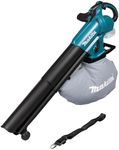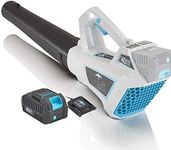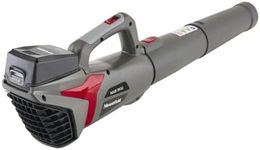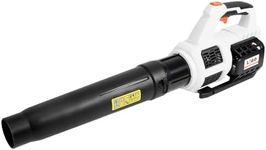Buying Guide for the Best Budget Cordless Leaf Blower
When choosing a cordless leaf blower, it's important to consider the specific needs of your yard and how you plan to use the tool. Cordless leaf blowers offer the convenience of mobility without the hassle of cords, making them ideal for quick clean-ups and reaching areas far from power outlets. However, they vary in power, battery life, and features, so understanding these specifications will help you make an informed decision that best suits your needs.Battery VoltageBattery voltage in a cordless leaf blower indicates the power potential of the motor. Higher voltage typically means more power, which can translate to better performance in moving leaves and debris. Common voltage ratings range from 18V to 80V. For small yards with light leaf coverage, a lower voltage (18V-36V) may suffice. For larger areas or heavier debris, consider a higher voltage (40V-80V) to ensure efficient operation. Choose based on the size of your yard and the typical volume of leaves you need to clear.
Airflow (CFM)CFM, or cubic feet per minute, measures the volume of air a blower can move. This is crucial for determining how effectively the blower can move leaves and debris. Lower CFM (up to 300) is suitable for light tasks like clearing patios or driveways. Medium CFM (300-500) is good for average yard work, while high CFM (500+) is ideal for large yards with heavy leaf fall. Consider the typical workload and choose a CFM rating that matches your needs.
Air Speed (MPH)Air speed, measured in miles per hour (MPH), indicates how fast the air is moving out of the blower. Higher speeds can help dislodge wet or stuck leaves. For light tasks, an air speed of 100-150 MPH is usually sufficient. For more demanding tasks, such as moving wet leaves or heavier debris, look for a blower with 150-200 MPH or more. Match the air speed to the type of debris and conditions you typically encounter.
Battery LifeBattery life determines how long you can use the blower on a single charge. This is important for planning your work sessions without interruptions. Battery life can range from 15 minutes to over an hour, depending on the model and usage. For small yards or quick tasks, a shorter battery life may be adequate. For larger properties or extended use, look for models with longer battery life or consider purchasing an additional battery for uninterrupted work.
WeightThe weight of a cordless leaf blower affects how easy it is to handle and maneuver. Lighter models (under 5 pounds) are easier to carry and use for extended periods, making them ideal for smaller tasks or users who prefer less strain. Heavier models (over 10 pounds) may offer more power but can be tiring to use for long periods. Consider your physical comfort and the duration of typical tasks when choosing the weight of your blower.
Noise LevelNoise level is an important consideration, especially if you live in a neighborhood with noise restrictions or prefer a quieter operation. Measured in decibels (dB), lower numbers indicate quieter performance. Most cordless leaf blowers range from 60 to 100 dB. If noise is a concern, look for models with lower dB ratings. Consider your environment and personal preference for noise when selecting a blower.
















